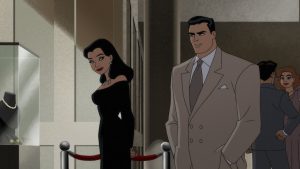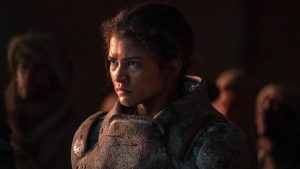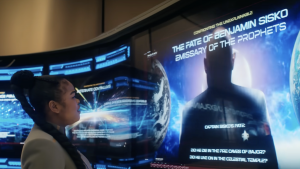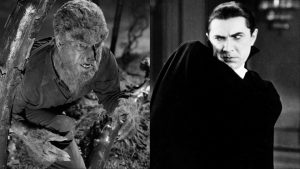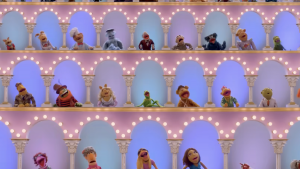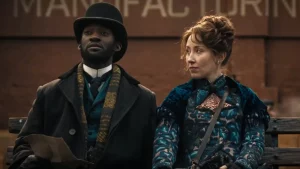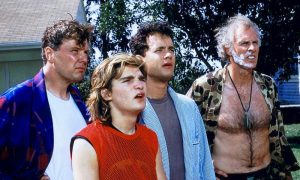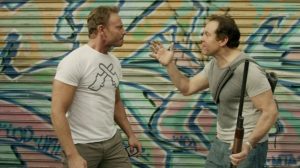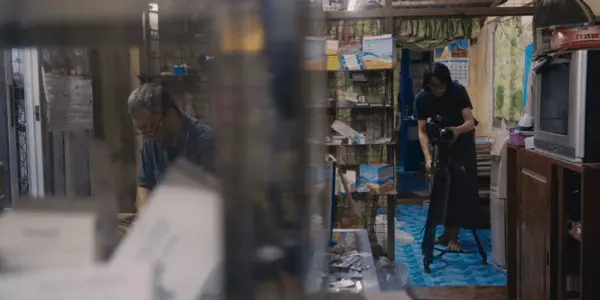
It has been lamented over ad nauseum, but the current climate of complete indifference towards any form of art or creative expression that exists outside one’s tunnel vision is staggering and disappointing especially in a time when the First Look series that plays annually at the Museum of the Moving Image in Queens, New York has such an inspired lineup of movies for locals to enjoy. Even here in Chicago, there have been many interesting screenings of off-the-beaten path movies playing at established venues like the Gene Siskel Film Center and the Music Box theater, but also makeshift arthouse spaces like Sweet Void Cinema near Humboldt Park and of course Doc Films at the University of Chicago campus. I invariably see as many younger people at these screenings as old people, which slightly allays the notion that the idiots creating meaningless ‘content’ on the internet are dictating the trajectory of love for film. But incuriosity is still an epidemic and the best I can do to contribute to rise the tide against it is to give insight into smaller and less-seen movies. This doesn’t mean promotion. There are a few films from this years First Look that I wasn’t all that moved by, but there’s unquestionably a better chance of finding a masterpiece here (which I did in Lois Patiño’s Samsara) than at any multiplex I frequent.
The Clinic (dir. Midi Z)
The Clinic (2023)- source: Seashore Productions
Oftentimes I tend to roll my eyes when a filmmaker makes a movie about another filmmaker. It feels like the kind of idea you get when you don’t have any other ideas. Like buying a tie or a watch for your dad’s birthday. Midi Z however folds the creative endeavors of his central subject into the pursuit of a sidelined escape. Dr. Aung Min and his wife work as medical doctors inside of a makeshift roadside shack in Yangon, Myanmar. It seems like an unofficial place that might sell bootleg drugs or alternative medicine “potions”, but these are in fact certified doctors and run a pretty tight proper ship. Min tends to many difficult ailments that his patients come in for and scolds several of them for not taking care of themselves.
The dimensions of his office, its narrow cramped alleys and walls stuffed to the brim with all kinds of medical equipment, disposables, reflective glass panels, and medicines, creates geometric framing within the camera frame. We see this flipped and contorted when Min begins to shoot his own movie inside the office. The consistent compartmentalizing of the space, and spaces within the space, reflect the medical couple’s lives within modern day Myanmar. A practical purpose of their main profession must make room for the escape of creative endeavors. A peaceful life within the confines of their marriage must eventually give into the ongoing political turmoil that exist in the greater nation.
The genocide of the Rohingya and the ethnic cleansing of Rakhine state by the military finds almost not place of mention in the professional side of Min’s work, but it comes to political fruition when he finally begins making plans for his movie. By dividing the film in these two halves, Midi Z deliberately opens the world of Myanmar to the audience juxtaposed with the opening of Min from his close-knit medical job to the freewheeling creativity he expresses as a filmmaker. The movie he wants to make is about a man who is ethnically Rakhine, but lives his life as a Rohingya without knowledge because his parents abandoned him when he was little. The idea is clear in its political intentions and those hit a nerve at a festival premier where an older gentleman scolds Min for criticizing the military within the film.
The Clinic is a patient and politically sharp film. It doesn’t bludgeon its audience but infuses its politics into a story of ordinary citizens of Myanmar. It has an authentic and carefully considered approach to discussing the ways art can create a space away from the rigorousness and monotony of daily life. It creates the chance to lift one’s head up, breath, and think, and oftentimes, that leads to speaking out in a way those in power may feel threatening.
Magic Mountain (dir. Mariam Chachia & Nik Voigt)
Magic Mountain (2023)- source: Institute of Documentary Film
The post-Soviet Georgian institution of Abustamani is a place where documentarian Mariam Chachia had nightmares about seven years prior to the making of her film. She was diagnosed with tuberculosis and doctors told her that if they could not find a recovery she would be sent to the large castle-like facility in the mountains of Abustamani. Chachia recounts in the documentary how the place had a sort of mythical tale surrounding its discovery. When Georgian royal Georgi Romanov went to India to search for a cure for his illness, the yogis there told him to go to a remote area in the Caucus mountains to find his cure.
Abustamani in reality is sort of like an anarchist nursing home. It has doctors, orderlies, and caretakers for its sick elderly patients but it turns into a geriatric frat house at night when they all head home. One major issue I had with Magic Mountain is that Chachia’s telling of it, in deep almost mysterious narrative, is belied by the depiction of its actual ongoing events. It doesn’t feel mythical, or scary, or even interesting. It just feels like a crumbling institution that has been forgotten by everyone except the weird eccentrics who reside there, drinking, playing cards, and generally just waiting for death.
Chachia and her directing partner Nik Voigt (who is also the film’s cinematographer) shoot the empty halls, the barren outer fields, the enclaves of the surrounding hills like an ancient castle. It looks drab and crusted, but still modern in its facade. It’s a thoroughly unremarkable place aesthetically. It’s just sad in terms of its utilization currently. Magic Mountain only really starts to say something interesting when it’s revealed that Abustamani is going to be up for sale and torn down to build a private estate for a rich oligarch. Another Georgian documentary, a much better one I might add, Salomé Jashi’s Taming the Garden, evoked the present situation in the country where many of its rich statesmen feel that the Earth and its belongings are there for the taking. In Jashi’s documentary, the hubris is of transporting all the biggest and most historical trees to the estate grounds of a rich politician who just wants them so he can see them for his morning walks by himself.
Magic Mountain is much more personal of a story than even though Chachia tries to tie its existence to an excavation of Georgia’s pre-Soviet, Soviet, and post-Soviet eras. It doesn’t quite coalesce and whatever intimate thesis she draws from the ‘nightmares’ she had about the place when she was sick with tuberculosis never manifest themselves into a visual representation. The documentary meanders and strings together various ponderings that feels like an inner monologue we never quite get enough insight into.
Samsara (Lois Patiño)
Samsara (2023)- source: Curzon Film Distributors
The first masterpiece of the year is Lois Patiño’s Samsara, a film of densely layered, gorgeous textural imagery, quietly evocative sense of time, and a spiritually rich contemplation of vast cultural intricacies in the human experience. Patiño creates a movie that embodies the feeling of ‘touching a film’. Its sensations are encouraged to be participated in by the audience, in a radically direct 12-minute sequence in which the filmmaker asks the audience to close their eyes and simply ‘take the journey’ with an old dying Laotian woman as she experiences reincarnation of the soul. Some may find such a to be gimmicky, but in heightening the sense of sound, in transferring the flashing of light from celluloid to the eyelid, it turns the act of watching a film itself into something personal and physical – an experience uniquely created by one’s body part.
The body, its physical form, and its various manifestations is representative of the cinematic transference of reference. We at first are in Laos but then turn to Tanzania as the Laotian woman’s soul resides in that of a young goat – a kid. Before she passes to another life, however, a young man named Amid reads her the Bardo Thodol, the Tibetan Book of the Dead. Within it, he recites each time the following passages:
Your body is now that of a ghost and you meet your acquaintances and visit familiar places if they were a dream… you will think “Now that I’m dead, what can I do?”… and then “How beautiful would it be to have a new body?”
In Tanzania, the life of the young kid becomes echoed in what the old woman says before she dies – that we think reincarnation into an animal is a punishment but that’s only because we treat animals so cruelly. From the lives of monks praying, and exploring the rivers to Tanzanian seaweed farmers and goat herders under the voice of a Muslim cleric calling everyone to prayer, Patiño’s film performs echo chants of varied existence and belief miles and years apart. The textured layering of frames through various dissolves and manipulations of the image creates a tapestry that hypnotizes and soothes its enigmatic beauty.
Footsteps (Fiona Tan)
Footsteps (2023)- source: Museum of the Moving Image
I feel strange writing about something that is an art installation that, because I had no other choice, I watched on my laptop. This has sort of happened before, when I saw Julian Rosefeltd’s Manifesto starring Cate Blanchette and was confounded by it. Then I realized it was supposed to be an art installation called Manifesto: Art X Agency wherein all of the various sequences of Cate Blanchette delivering monologues were supposed to be displayed on several screens and in a sort of strange ‘dialogue’ with each other which would be much more apparent inside the Hirshhorn.
Fiona Tan’s Footsteps I imagine works in a similar regard but only on one screen. The artist plays several restored archival prints of film depicting the slow but drastic industrialization of a Dutch town with an Irish man reciting notes that her father sent her during the 1980s when she was going to art school and working on her first installation and exhibition. Part of me also thought of experiencing it as transitory. At museums, they play video installations that people stop and listen to or watch for a little bit but then move on to other parts of the gallery. Suffice it to say I played this film twice. Once all the way through and then just picked random moments I thought I might “walk in on” while traversing a museum.
The experience of seeing these images juxtaposed with those letters creates the obvious sensation of seeing two different worlds and times coalesce into the grander machinations of a human political movement. At one point in one of the last letters, Tan’s father writes about climate change and how first-world countries, often the biggest polluters, are asked to take the step of reducing their pollution for the developing nations. He pontificates, “Would we be willing to sacrifice our lavish standards of living to give the rest of the world a standard that is liveable?” At the same time, we see the Dutch town bustling, industry in full bloom, the farmlands and sparseness of the images at the beginning of the film are replaced by something much noisier. Sight and sound evoke the same message, in different times and places. Footsteps wonders, can we reverse the speed and pace of our movement?
El eco (The Echo) (dir. Tatiana Huezo)
El eco (2023)- source: The Match Factory
Realism is often an overrated trait when it comes to cinema so it’s always interesting to consider what a filmmaker is doing in the realm of ‘docufiction’. Are they making the fiction more realistic or making the documentation more fantastical? El eco is a curious ‘coming of age’ documentary, featuring kids and families living in the Mexican hinterlands on a farm. Through the witnessing of birth, life, and death of the animals on the farm the children begin to learn more and more about the truths and magic of the world.
Tatiana Huezo’s Prayers for the Stolen became immensely praised after it premiered at Cannes and naturally, its dramatic thrust in coming-of-age coming from the drug trade and cartels I’m sure fed into some of that popularity in a way that El Eco may not. But her latest film is just as authentic a portrayal of growing up in Mexico, even if it comes in a quieter and more placid packaging. Huezo’s direction is typically picturesque and attuned to the height perception of the children she documents. The camera is unflinching in the portrayal of the farm animals in both life and death, making sure to make us bear witness to the not-so-aesthetically pleasing realities of natural life just as the children squirm and squint and turn away when their parents cut a goat’s throat or pull a newborn baby sheep out of her mother.
Despite these stark qualities, there are often times when El eco seems a bit lost, wandering just as its subjects do towards objects and things in a disjointed manner. While the ‘slice of life’ approach to this film gives a broad brushstroke of life in the hinterlands it seems to flutter the way a moth does – just a bit too listlessly to bring forth the grand metaphorical parallels it etches between the kids and the nature that surrounds them.
Museum of the Moving Image’s “First Look” Series took place in Queens, NY from March 13 – March 17
Does content like this matter to you?
Become a Member and support film journalism. Unlock access to all of Film Inquiry`s great articles. Join a community of like-minded readers who are passionate about cinema – get access to our private members Network, give back to independent filmmakers, and more.
